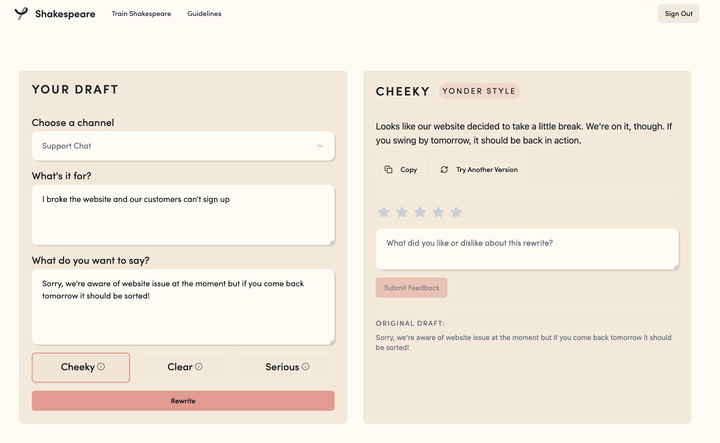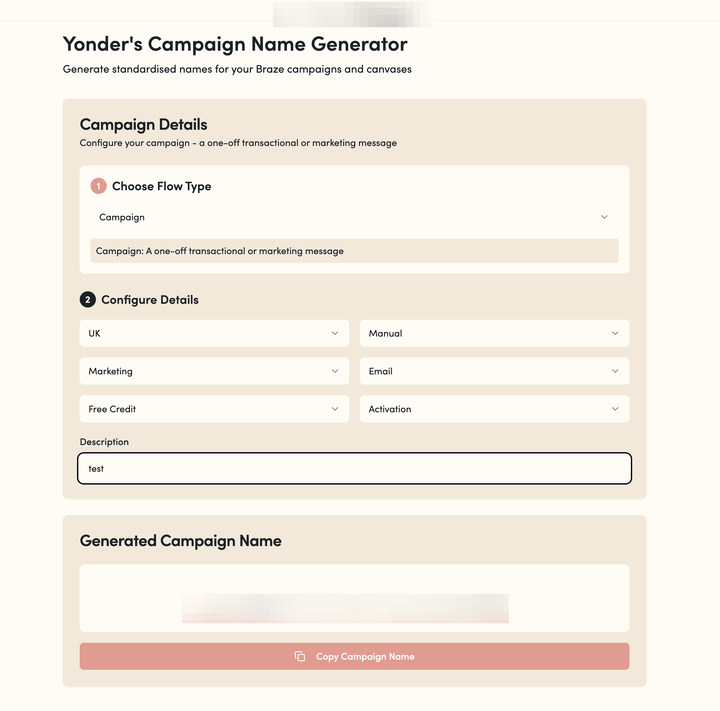Why AI startups are blowing past revenue milestones that old-school SaaS could only fantasize about.
And why old-school SaaS is on a ticking clock.
This post is sponsored by Stripe Billing.
I recently joined Lovable (Lovable.dev) and my mind is blown. Lovable lets you build working apps and websites by simply chatting with AI and we’re racing past $70M ARR - just 7 months in. How wild is that? And we’re not even alone in this trend. DeepSeek is rumored to have reached $200M ARR in under a year, while Cursor has hit $100M.
AI startups are blowing past revenue milestones that old-school SaaS could only fantasize about.
According to Stripe’s “Indexing the AI Economy” report:
→ Median time to $1M ARR → AI: 11.5 mo | SaaS: 15 mo
→ Time to $5M ARR → AI: 24 mo | SaaS: 37 mo
The playbook has changed. And it’s NOT about some growth hacks.
Are you paying attention?
Why this is happening
It’s tempting to dismiss today’s AI boom as just another hype cycle - because if you’re clinging to the old SaaS playbook, that’s a much more comfortable story. But here’s the truth: we’re in the middle of a structural shift on par with the industrial revolution. This isn’t a passing trend - it’s a rewrite of how products are built, monetized, and adopted. And no, it’s not going away.
Take Lovable as an example - are there lots of folks just exploring? Sure. But there’s an unmistakable wave of builders pushing the limits of what was unimaginable just a year ago - quickly creating things that will become tomorrow’s norm. And once you see and experience this… you can’t go back.
This isn’t just anecdotal - our data proves it. We consistently see two types of use cases:
Use case 1: Inside companies
There’s a growing sense of urgency rippling through the corporate world right now. Every team feels the pressure to be doing something with AI - or risk becoming obsolete. It’s professional FOMO at a huge scale.
At Lovable we consistently see two main types of internal adopters driving AI-first usage inside companies:
Internal: Tooling, Prototypes, and Workflow Automation
These teams are using AI-native tools like Lovable to automate workflows and replace what they used to slog through manually, pay for bloated tools to handle, outsource, or beg Engineering to prioritize - often for months (and let’s be honest, it usually didn’t get prioritized).
Now, they’re building exactly what they need - unlocking new levels of productivity, empowerment, and faster iteration cycles. One of my favorite examples is marketers, PMs, and designers spinning up functional prototypes that double as live demos to secure leadership buy-in or scope more formal Engineering investment.
External: Landing Pages, Waitlists, and MVPs
Another fast-growing use case is building external-facing experiences: landing pages, waitlists, MVPs - to launch things faster, test ideas, and gather feedback. Teams are no longer walking into leadership or board meetings with slide decks. They’re bringing functional products that make the vision concrete and actionable.
Case and point: I recently chatted withTom Davies who leads Marketing at Yonder (who also has an awesome Substack you should sub to). He built public-facing waitlist for a new debit card launch with…. Lovable! But wait, there is more. He also created a tone-of-voice tool to help support teams write engaging macros:
And a campaign-naming tool to ensure clear taxonomy and structure across marketing campaigns:
And it’s not just employees quietly adopting Lovable on their own. Leadership teams are actively pushing AI adoption across their companies to drive productivity gains. In some cases, the pressure is explicit - some exec teams are now saying they won’t approve new headcount unless there’s a clear reason why AI can’t do the job.
Use Case 2: Entrepreneur
Founders, solopreneurs, and entrepreneurs are also seizing this opportunity. Before, if you had an idea for a new product, you needed to find a technical co-founder to move things forward.
Now, AI is your technical co-founder.
Tools like Lovable allow you to create a first functional prototype that you can use for fundraising. The era of pitching with decks only is over, you can now build a functional product on your own.
But not only can you build it on your own, you can also monetize it - quickly.
People launching these products are making money (a lot of it). I find it amazing that you can now monetize your ideas by investing as little as a Lovable subscription. Check out this discussion on Reddit that compares output with $250 Lovable subscription to $900K that it would have cost to replicate the output before Lovable. The barrier to entry has never been lower.
What tickles me even more is that Solopreneurship doesn’t mean only fractional work or consulting gigs anymore. You can now build a company entirely on your own. How beautiful is that?
AI is changing monetization models
AI-native booms is also about a fundamental shift in how value is delivered and captured.
In traditional SaaS, time-to-value could be long and layered: users had to explore the product, set things up, learn features, and often only after deep usage or team adoption did the true "aha!" moments happen.
AI flips that dynamic. AI is collapsing time-to-value down to first use - literally in the first prompt. The moment a user sees the AI generate something meaningful, they’re hooked. It may not be the final "aha!", but the instant feedback loop creates strong initial pull and natural habit formation. That’s why, as the Stripe report points out, most AI companies are leaning into usage-based or credit-based pricing models.
At Lovable, for example, users get 5 free daily credits (max 30/month) and within one or two prompts, they’ve seen enough value to want more. That’s when credit-based upsell happens. Features (like publishing to a private domain) still matter, but they are secondary - usage drives monetization. And this is without any bells and whistles - just a natural pull from value delivered in the first interaction.
This is why, as an industry, we’re likely kissing feature-first and per-user monetization models goodbye. In an AI-native product, it simply doesn’t make sense to charge $X/month per user if one user costs you 10x more in compute than another. Nor does it make sense to gate core usage behind static feature tiers when value is being delivered on a per-interaction basis.
Common objections are: "But won’t usage-based pricing scare off users?" or "Don’t buyers prefer predictable costs?" Sure, predictability still matters - that’s why many AI companies (including us) are blending credits with subscription tiers.
Another objection: "What about enterprise buyers? They like per-seat models." True - for now. But even enterprise buyers are getting smarter about AI economics. We’re already seeing large companies negotiate for credits at scale, not seats. The procurement conversation is evolving.
Why traditional SaaS will struggle
I’m genuinely worried for large enterprises and legacy SaaS companies - because AI-native companies aren’t just moving faster, they’re structurally designed for speed. And that speed compounds.
Too many big companies still think they can "AI-enable" their existing orgs and compete. But AI-native companies are architected differently at every level: product, workflows, monetization, even org design.
Take monetization. In traditional SaaS, I’ve seen the best pricing ideas grind to a halt under internal tech debt. Homegrown billing systems or, well… Zuora (yes Zuora, I’m calling you out. I’m sorry but I see teams everywhere struggle with building on you). Simple pricing changes took six months, and even then, we often shipped the least bad idea we could technically pull off - not what we even considered to be awesome nor what the market expected.
Now contrast that with Lovable. We run entirely on Stripe Billing, so packaging changes and experiments ship in days and weeks, not quarters. And because our product is usage-based, monetization agility is built into our GTM motion. We can tune pricing to match how users engage - not locked into static feature tiers or per-seat models. That flexibility alone is a structural advantage.
But it goes deeper. AI-native companies use AI across every workflow - product, growth, marketing, ops. That means they ship faster and iterate faster. And because they’re built from scratch for flexibility, they don’t accumulate tech debt the way legacy players do. The gap between an AI-native and a traditional SaaS company isn’t fixed - it grows over time.
This shift is also unlocking global growth. You no longer need to hire 200 engineers in the Bay Area to build a world-class product. Small teams anywhere in the world can now punch way above their weight because AI takes on so much of the heavy lifting. The old playbook - raise a huge round, hire 100 people, build for a year - is getting disrupted fast.
Case and point: Lovable originated in Sweden and still has all of its engineering horsepower in Europe (who act very much like product folks as well). If I had to bet on one thing, it’s that AI will fuel European tech growth like crazy.
And perhaps most importantly: AI-native orgs don’t need giant middle management layers. A leaner team can do more. Lovable team consists of only 35 full-time employees, and we are not planning on growing that too fast. Yet we routinely ship in days or weeks what I’m used to taking quarters if not years across 100s of people. And that’s becoming the norm across the new generation of AI companies.
The bottom line: this isn’t just about speed, it’s about compounding structural advantage. AI-native companies are architected for velocity - in their systems, teams, and monetization. Traditional SaaS companies can’t bolt this on after the fact. Without a fundamental rebuild, they will fall further behind each quarter.
If you want to see what this looks like in practice, join “The AI boom on Stripe: Lovable’s meteoric growth and GTM success” a session Stripe is hosting with Lovable CEO Anton. You’ll get an inside look at how this new generation operates.
It’s a whole new game - you in?
SaaS made it normal for people to consume products in the form of software. Now, AI is making it normal to bend the software to do whatever your heart desires.
That raises the bar for everyone.
The days of charging for basic functionality are numbered. The new standard is: show value fast, let people pay for what they consume, and make the pricing feel obvious, not like a wall.
If you’re still fighting your billing system, still monetizing features (not usage, and still pushing one-size-fits-all flows, you’re lagging behind.
And in a market moving this fast, lagging behind isn’t just a warning. It’s a countdown.
Edited with the help of Diana Bernardo.





Crazy times.
Btw Cursor reported $500 ARR recently (which just emphasizes your point)
Interesting that this perfectly lines up with what Eric Vishria described on Turner's podcast—Benchmark has "half a dozen companies that have gone zero to over $100M in 18 months." The convergence is striking: both pieces highlight the same 5-10x speed advantage over traditional SaaS.